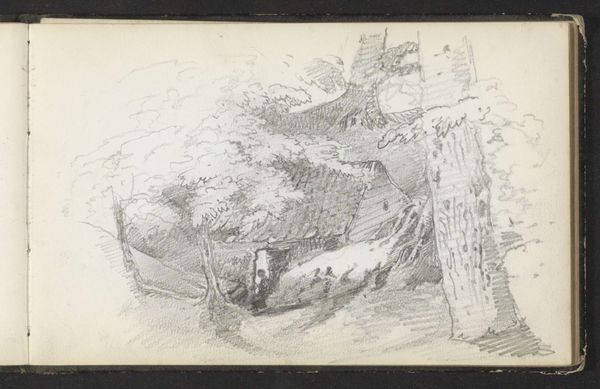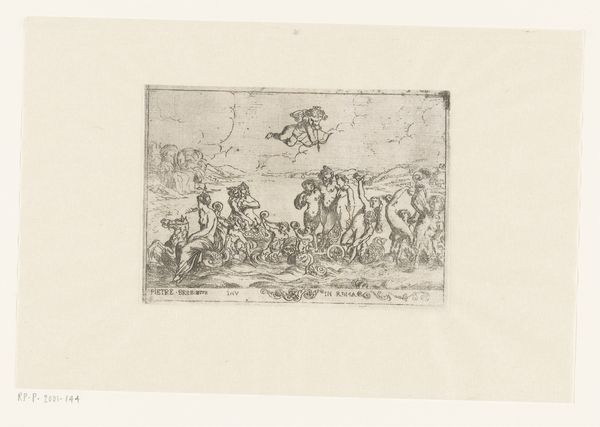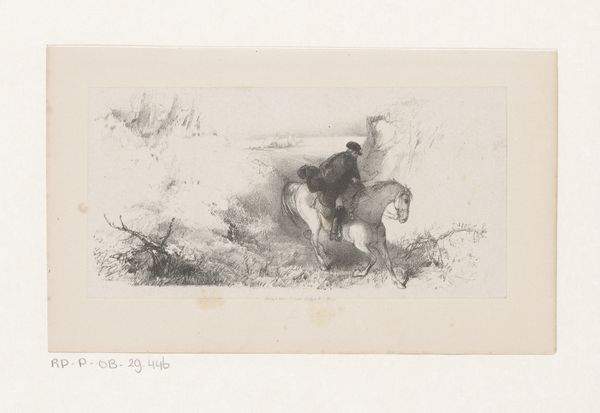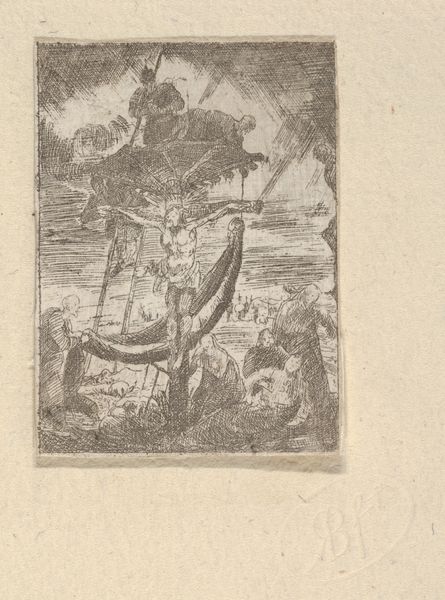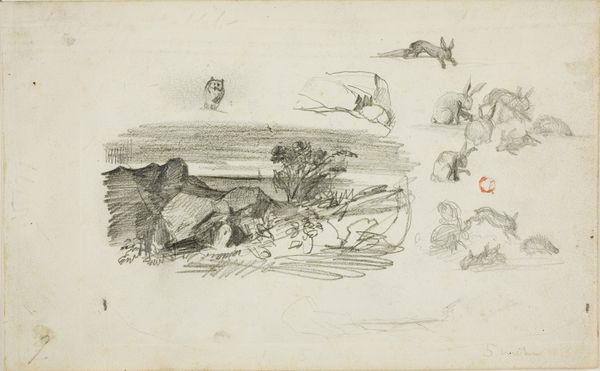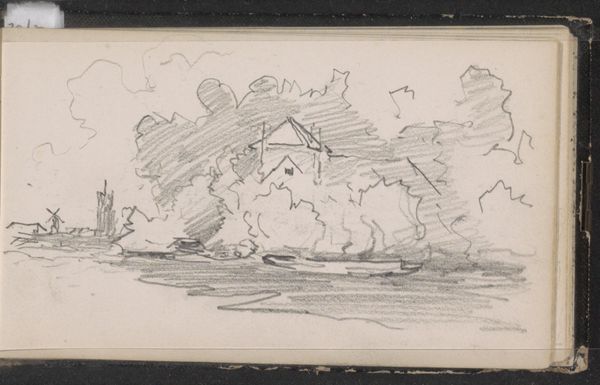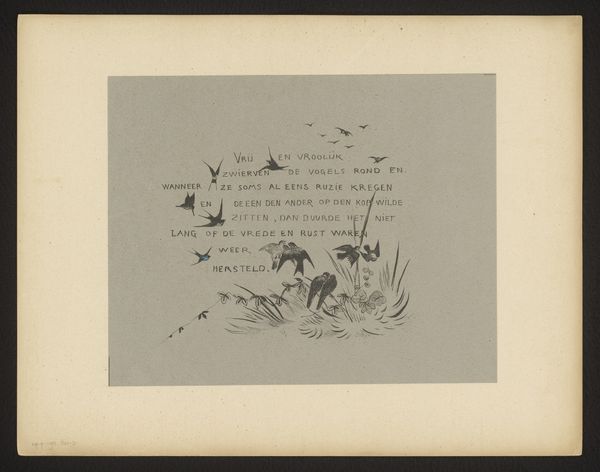
drawing, paper, ink, pen
#
drawing
#
ink painting
#
caricature
#
paper
#
ink
#
coloured pencil
#
romanticism
#
pen
Dimensions: height 116 mm, width 183 mm
Copyright: Rijks Museum: Open Domain
Editor: So, here we have a caricature by Alexander Ver Huell, from an 1843 student almanac, rendered in ink and pen on paper. It's quite busy, almost frantic with all the figures. What do you see in this piece beyond just a funny scene? Curator: It's easy to dismiss it as mere caricature, but let's consider the materials themselves. The almanac suggests mass production for student consumption, indicating a specific audience and social context. The choice of pen and ink allowed for detailed reproduction. This piece provides an avenue for viewing Romanticism beyond the realm of high art. How does the labor of its production and its material accessibility inform our understanding of its meaning? Editor: I hadn’t really considered that angle. So you're suggesting that the mode of production is intrinsically linked to its purpose as social commentary, aimed at students? Curator: Precisely. Consider also the paper itself. It was not an inexpensive medium at the time, raising questions of patronage or student funding for such almanacs. The ink, its specific qualities, its likely local manufacture, further ties this to its specific geographic and social context. This wasn’t a work destined for a museum, it was part of a larger consumer culture, a visual product circulating within a very particular student society. Editor: That shifts my perspective quite a bit. I initially saw it as a quirky illustration, but now it feels much more embedded in its time and place. It makes me wonder how many other everyday objects from this period are loaded with this level of cultural information. Curator: Indeed! By focusing on the materials, labor, and its initial consumption, we can unlock layers of understanding about student life, social satire, and the very nature of art production in the 19th century. Editor: Thanks, I’ll never look at a simple drawing the same way again. Curator: It is important to reflect on where materials come from, and what hands they pass through, on their journey to becoming art.
Comments
No comments
Be the first to comment and join the conversation on the ultimate creative platform.
